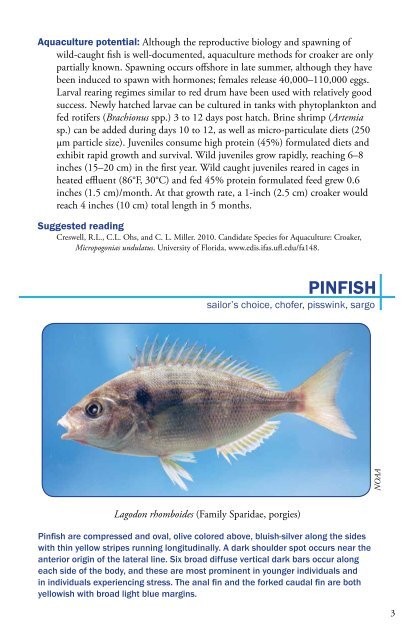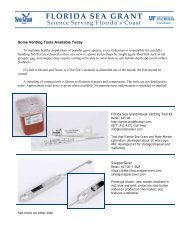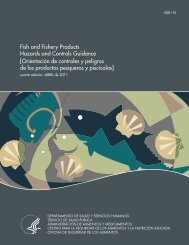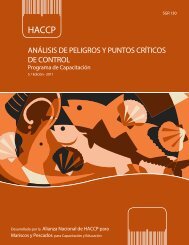MARINE BAITFISH
Growing Marine Baitfish - Florida Sea Grant
Growing Marine Baitfish - Florida Sea Grant
Create successful ePaper yourself
Turn your PDF publications into a flip-book with our unique Google optimized e-Paper software.
Aquaculture potential: Although the reproductive biology and spawning of<br />
wild-caught fish is well-documented, aquaculture methods for croaker are only<br />
partially known. Spawning occurs offshore in late summer, although they have<br />
been induced to spawn with hormones; females release 40,000–110,000 eggs.<br />
Larval rearing regimes similar to red drum have been used with relatively good<br />
success. Newly hatched larvae can be cultured in tanks with phytoplankton and<br />
fed rotifers (Brachionus spp.) 3 to 12 days post hatch. Brine shrimp (Artemia<br />
sp.) can be added during days 10 to 12, as well as micro-particulate diets (250<br />
µm particle size). Juveniles consume high protein (45%) formulated diets and<br />
exhibit rapid growth and survival. Wild juveniles grow rapidly, reaching 6–8<br />
inches (15–20 cm) in the first year. Wild caught juveniles reared in cages in<br />
heated effluent (86°F, 30°C) and fed 45% protein formulated feed grew 0.6<br />
inches (1.5 cm)/month. At that growth rate, a 1-inch (2.5 cm) croaker would<br />
reach 4 inches (10 cm) total length in 5 months.<br />
Suggested reading<br />
Creswell, R.L., C.L. Ohs, and C. L. Miller. 2010. Candidate Species for Aquaculture: Croaker,<br />
Micropogonias undulatus. University of Florida, www.edis.ifas.ufl.edu/fa148.<br />
PINFISH<br />
sailor’s choice, chofer, pisswink, sargo<br />
NOAA<br />
Lagodon rhomboides (Family Sparidae, porgies)<br />
Pinfish are compressed and oval, olive colored above, bluish-silver along the sides<br />
with thin yellow stripes running longitudinally. A dark shoulder spot occurs near the<br />
anterior origin of the lateral line. Six broad diffuse vertical dark bars occur along<br />
each side of the body, and these are most prominent in younger individuals and<br />
in individuals experiencing stress. The anal fin and the forked caudal fin are both<br />
yellowish with broad light blue margins.<br />
3








